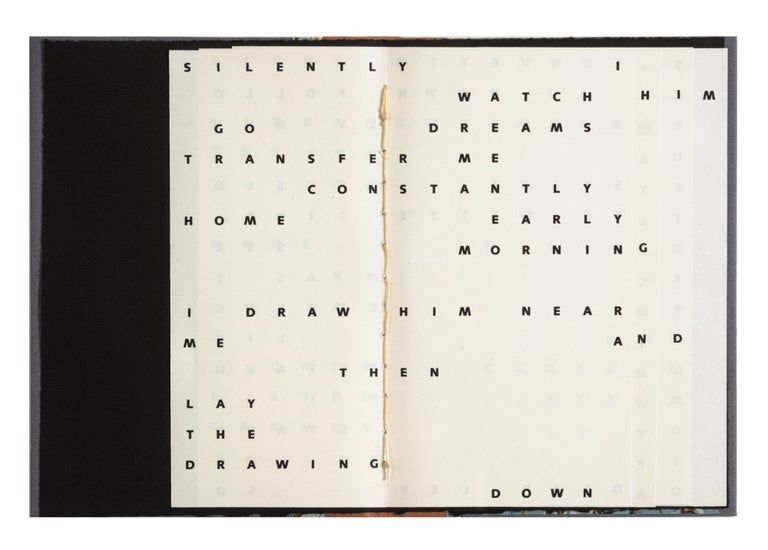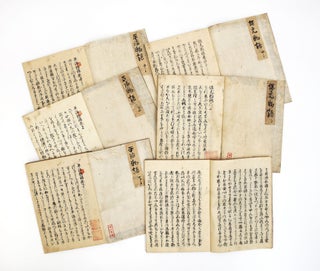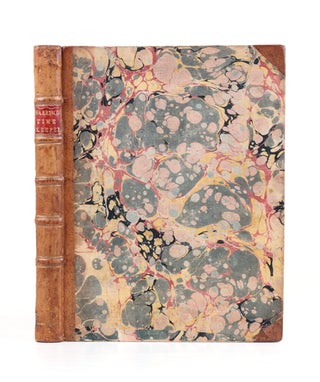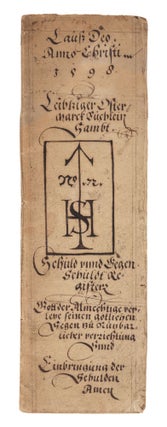
Out of Sight, Book Number 107.
Eight leaves, each leaf ½” larger than the previous. 8vo (197 x 144 mm.), orig. leather-backed boards, stitching on spine, title printed on upper cover. [From colophon]: Rochester: Visual Studies Workshop, 1985.
A scarce visual and interactive poem by the celebrated book artist, Keith A. Smith (b. 1938), bound by the artist and printed offset in a numbered edition of 200. This is a beguiling and intricate composition with overlapping text on each leaf, requiring repeated manipulation of the book and the pages.
Smith explains the structure and creation of this book (as well as for Book 108) in his auto-bibliography: “All the letters on the far right which exist in layered form protruding from all the remaining pages must form words when the book is opened to that folio. When that page is turned, the remaining letters form other words as the poem proceeds. This juggling act continues as each page is turned requiring the new writing on each page to make use of the letters in sight from all the remaining pages. The final page is the only one which is not dependent upon all the other pages…
“I love these two books because they are my best examples of writing that is conceived as a book experience. If the text of the poem were recited on the radio, the listener would hear the text, but that is only part of the book. I am always searching for ways to speak aside from the pictures and/or text…”
In pristine condition. The full text of this poem is reproduced in Smith’s 200 Books.
❧ Smith, 200 Books (2003 ed.), pp. 186-89.
J. Drucker, The Century of Artists’ Books (2004 ed.), pp. 131-33–“In Keith Smith’s Out of Sight, a series of pages which bear only text have been cut at intervals so that each succeeding page is exactly one letter wider than the next. As a result the first page which the viewer sees on opening the book is a complete text reading left to right, top to bottom, except that every line reads across the cut series of pages. As each page is turned, the page below reveals another text which also reads across the full set of letters, but with a different meaning in each turning. So ‘Dearly I draw him near’ becomes ‘Tenderly I draw him near’ and then ‘Erase today I saw him appear’ in the first three turnings of the top three lines…In this work the cutting changes the alignment of the edges, allowing the pages to read against each other rather than in isolated sequence.”.
Price: $950.00
Item ID: 6997




